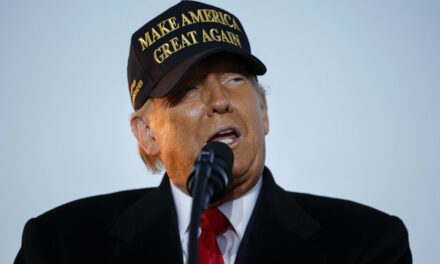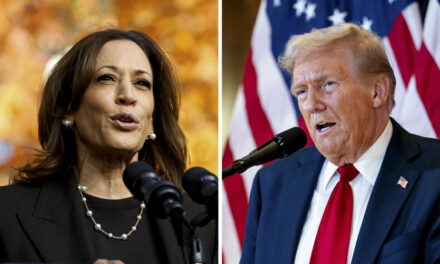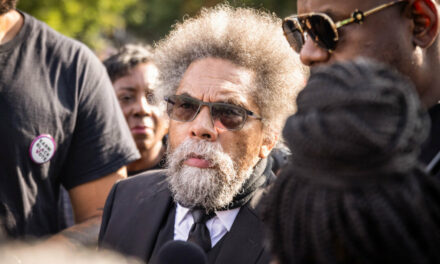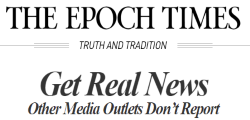We support our Publishers and Content Creators. You can view this story on their website by CLICKING HERE.
The Purcell principle, established by the Supreme Court, generally cautions against changes to election procedures close to voting day.
In the run-up to Election Day, court battles have emerged over various policies related to ballots, election integrity, and vote-processing procedures.
Each case raises a typical judicial question: whether the policies align with state or federal law. A common issue in many of these cases is whether judges should exercise their discretion to uphold or invalidate policies so close to Nov. 5.
Cases in Georgia, Virginia, Pennsylvania, and Mississippi have each seen attorneys discussing something known as the Purcell principle, which is generally understood to caution against last-minute changes to election procedures. The exact contours of when and how that principle applies have been subject to debate.
In 2006, the Supreme Court’s decision in Purcell v. Gonzalez vacated an appeals court’s decision to halt Arizona’s voter identification law. The court, in its October 2006 opinion, emphasized that it expressed no position on the outcome of the case.
Instead, it suggested the timing of the election took precedence.
Honest Elections Project Vice President Chad Ennis told The Epoch Times that he thought Purcell was “a wise rule” but that the Supreme Court and appellate courts hadn’t “given enough guidance to the lower courts on how to use it.”
Pennsylvania
More recently, both sides of lawsuits in the battleground state of Pennsylvania have attempted to use the Purcell principle to argue in favor of their position in voting-related lawsuits that came before lower courts.
“Purcell can go both ways, and people will argue it both ways,” J. Christian Adams, who leads the Public Interest Legal Foundation, told The Epoch Times.
In the week before the 2024 elections, Republicans asked the U.S. Supreme Court to halt a state court decision allowing voters to cast provisional ballots after improperly submitting mail-in ballots.
Pennsylvania officials told the Supreme Court that the RNC had the Purcell principle backward and that “it is the entry of a stay, on the eve of the election, that would cause maximum disruption and confusion.”
The Pennsylvania Supreme Court sided with Republicans but didn’t offer any reasoning surrounding Purcell in its per curiam opinion.
Former Michigan Solicitor General John Bursch told The Epoch Times that “Purcell generally applies only to election mechanics and procedures—not ballot access—and operates to freeze those mechanics and procedures in place as an election gets close to prevent voter confusion.”
Virginia
Further illustrating competing concerns about timing were the Department of Justice’s (DOJ’s) lawsuits against Alabama and Virginia. Both states attempted to implement efforts designed to purge their voter rolls of noncitizens but did so within 90 days of the Nov. 5 elections, known as the “quiet period.”
Both the DOJ and Judge Patricia Giles suggested that the NVRA and Purcell shared common goals. After Giles issued an injunction and an appeals court affirmed that decision, Virginia asked the U.S. Supreme Court to intervene.
It’s unclear whether they ever will offer additional clarification. Adams said it was unlikely the court would further clarify the principle and denied it would ever set a specific timeline.
He also doubted that the court would take up cases after election day to review how courts applied Purcell before the election. Adams said he suspected the court’s brief order on Virginia’s law was based on Purcell.
Three justices—Justices Sonia Sotomayor, Ketanji Brown Jackson, and Elena Kagan—would have rejected Virginia’s request, according to the court’s order.
“There is little risk of voter confusion from a new map being imposed this far out from the November election,” Jackson said.
She also cited Kagan’s dissent in Merrill v. Milligan, a 2022 case that came up in the challenge to Virginia’s voter roll program.
He nonetheless outlined four factors that might bear on whether courts should halt state election changes, including whether the plaintiff waited too long in bringing the lawsuit. Virginia argued that plaintiffs in their lawsuit waited too long, but Giles disagreed.
She also indicated Kavanaugh’s concurrence wasn’t binding on her court, indicating a majority opinion was needed to resolve lingering questions around Purcell.

 Conservative
Conservative  Search
Search Trending
Trending Current News
Current News 







